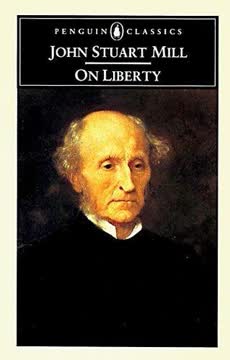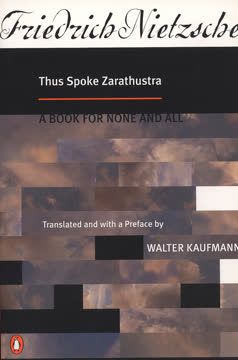Key Takeaways
1. History is a Class Struggle: The Engine of Societal Change
The history of all hitherto existing society is the history of class struggles.
Constant conflict. Throughout history, societies have been defined by the conflict between different classes, such as freeman and slave, lord and serf, and guild-master and journeyman. These struggles are not random but are the driving force behind societal change, leading to either revolutionary transformation or the mutual ruin of the contending classes.
Evolution of classes. Each historical epoch has its own unique class structure, with varying degrees of social rank and hierarchy. For example:
- Ancient Rome: Patricians, knights, plebeians, slaves
- Middle Ages: Feudal lords, vassals, guild-masters, journeymen, apprentices, serfs
- Modern Era: Bourgeoisie and Proletariat
Class struggle as a constant. This conflict is not a temporary phenomenon but a continuous process, sometimes hidden and sometimes open, that shapes the course of history. It is the fundamental dynamic that propels societies forward, or leads to their collapse.
2. Bourgeoisie vs. Proletariat: The Core Conflict of Capitalism
Our epoch, the epoch of the bourgeoisie, possesses, however, this distinctive feature: it has simplified the class antagonisms: Society as a whole is more and more splitting up into two great hostile camps, into two great classes, directly facing each other: Bourgeoisie and Proletariat.
Simplified class structure. Capitalism has simplified class antagonisms, reducing society to two main classes: the bourgeoisie (owners of capital) and the proletariat (wage laborers). This simplification intensifies the conflict between these two groups.
Bourgeoisie's rise. The bourgeoisie emerged from the ruins of feudal society, driven by the discovery of new markets and the development of new modes of production. They revolutionized industry and commerce, accumulating vast wealth and power.
- Discovery of America and the rounding of the Cape
- Rise of manufacturing and modern industry
- Establishment of the world market
Proletariat's dependence. The proletariat, on the other hand, is entirely dependent on the bourgeoisie for their livelihood, selling their labor as a commodity. This dependence creates a fundamental imbalance of power and fuels the class struggle.
3. Capitalism's Revolutionary Yet Self-Destructive Nature
The bourgeoisie cannot exist without constantly revolutionizing the instruments of production, and thereby the relations of production, and with them the whole relations of society.
Constant revolution. Capitalism is inherently revolutionary, constantly transforming the means of production, social relations, and the entire fabric of society. This constant change is driven by the bourgeoisie's need for profit and expansion.
Capitalism's achievements. The bourgeoisie has achieved remarkable feats, including:
- Subjugation of nature's forces
- Development of machinery and technology
- Creation of a global market
- Unprecedented productive forces
Internal contradictions. However, capitalism is also inherently self-destructive, creating the conditions for its own downfall. The system is prone to crises of overproduction, where the productive forces outgrow the capacity of the market to absorb them. This leads to economic instability and social unrest.
4. The Proletariat's Inevitable Rise and Revolutionary Role
But not only has the bourgeoisie forged the weapons that bring death to itself; it has also called into existence the men who are to wield those weapons — the modern working class — the proletarians.
Proletariat's creation. The bourgeoisie, in its pursuit of profit, has created the proletariat, the very class that will ultimately overthrow it. The proletariat is a product of modern industry, forced to sell its labor to survive.
Proletariat's development. As capitalism develops, the proletariat grows in number, becomes more concentrated, and develops a class consciousness. They begin to organize themselves into trade unions and political parties, recognizing their shared interests and their opposition to the bourgeoisie.
- Initial struggles against individual capitalists
- Formation of trade unions
- Development of class consciousness
Revolutionary potential. The proletariat is the only truly revolutionary class, as it has nothing to lose but its chains. They are destined to overthrow the bourgeoisie and establish a new social order.
5. Communism: Abolition of Private Property and Class
In this sense, the theory of the Communists may be summed up in the single sentence: Abolition of private property.
Abolition of bourgeois property. Communism is not about abolishing all forms of property but specifically bourgeois private property, which is the basis of capitalist exploitation. This form of property allows the bourgeoisie to control the means of production and extract surplus value from the labor of the proletariat.
Socialization of capital. Under communism, capital will be converted into common property, owned by all members of society. This will eliminate the class character of property and ensure that the means of production are used for the benefit of all, not just a privileged few.
- Capital as a social power
- Elimination of class character of property
- Production for the common good
End of exploitation. The abolition of private property will end the exploitation of labor and create a society where everyone contributes according to their ability and receives according to their needs.
6. The Communist Vision: A Classless, Stateless Society
In place of the old bourgeois society, with its classes and class antagonisms, we shall have an association, in which the free development of each is the condition for the free development of all.
Classless society. The ultimate goal of communism is to create a classless society, where there is no longer any division between the bourgeoisie and the proletariat. This will eliminate the source of social conflict and inequality.
Stateless society. With the abolition of class, the state, which is seen as an instrument of class oppression, will also wither away. The state will be replaced by a voluntary association of individuals, working together for the common good.
- Withering away of the state
- Voluntary association of individuals
- Cooperation and mutual aid
Free development of all. In a communist society, the free development of each individual will be the condition for the free development of all. This means that everyone will have the opportunity to realize their full potential, without being limited by class or economic constraints.
7. Critique of Other Socialisms: Feudal, Petty-Bourgeois, and German
Nothing is easier than to give Christian asceticism a Socialist tinge.
Feudal Socialism. This form of socialism is a reactionary attempt by the aristocracy to regain their lost power by appealing to the working class. However, they are ultimately incapable of understanding the modern world and are more interested in restoring the old order.
- Aristocratic critique of the bourgeoisie
- Nostalgia for the feudal past
- Inability to grasp modern history
Petty-Bourgeois Socialism. This form of socialism represents the interests of the small shopkeepers and peasants, who are being crushed by the rise of capitalism. They seek to restore the old means of production and are ultimately reactionary and utopian.
- Critique of capitalism from a small-business perspective
- Desire to return to pre-industrial society
- Ultimately reactionary and utopian
German or "True" Socialism. This form of socialism is a philosophical abstraction that ignores the real social conditions of Germany. It is a form of intellectual masturbation that serves the interests of the German petty-bourgeoisie.
- Philosophical abstraction of French socialism
- Ignorance of German social conditions
- Serves the interests of the petty-bourgeoisie
8. The Communist Call to Action: Workers of All Countries, Unite!
Working men of all countries, unite!
International solidarity. The proletariat is an international class, with shared interests that transcend national boundaries. The struggle against capitalism is a global struggle, requiring the solidarity of workers from all countries.
Revolutionary action. The proletariat must unite and overthrow the bourgeoisie through revolutionary action. This is the only way to achieve a classless society and end the exploitation of labor.
- Overthrow of the bourgeoisie
- Establishment of a proletarian dictatorship
- Creation of a communist society
Historical inevitability. The victory of the proletariat is historically inevitable. Capitalism is a self-destructive system that will ultimately be replaced by communism. The call to action is a call to embrace this historical destiny and fight for a better future.
Last updated:
FAQ
What's "The Communist Manifesto" about?
- Historical Context: "The Communist Manifesto" is a political pamphlet written by Karl Marx and Friedrich Engels, first published in 1848. It outlines the principles of communism and the theory of historical materialism.
- Class Struggle: The manifesto argues that all historical societies have been characterized by class struggles, and it predicts the inevitable victory of the proletariat (working class) over the bourgeoisie (capitalist class).
- Call to Action: It serves as a call to action for the working class to unite and overthrow the capitalist system, establishing a classless society.
Why should I read "The Communist Manifesto"?
- Foundational Text: It is a foundational text for understanding Marxist theory and the development of socialist and communist movements worldwide.
- Historical Impact: The manifesto has had a profound impact on political thought and has influenced numerous revolutions and political movements.
- Understanding Capitalism: It provides a critical analysis of capitalism and its effects on society, which remains relevant in discussions about economic systems today.
What are the key takeaways of "The Communist Manifesto"?
- Class Struggle: The history of society is the history of class struggles, with the current struggle being between the bourgeoisie and the proletariat.
- Inevitability of Revolution: The manifesto predicts that the contradictions within capitalism will lead to its downfall and the rise of communism.
- Communist Goals: Communists aim to abolish bourgeois property, establish a classless society, and ensure the free development of each individual.
What are the best quotes from "The Communist Manifesto" and what do they mean?
- "A spectre is haunting Europe — the spectre of Communism." This opening line highlights the growing influence and fear of communism across Europe.
- "The history of all hitherto existing society is the history of class struggles." This quote encapsulates the central thesis of the manifesto, emphasizing the role of class conflict in historical development.
- "The proletarians have nothing to lose but their chains. They have a world to win." This rallying cry encourages the working class to unite and fight for their liberation.
How does "The Communist Manifesto" define the bourgeoisie and proletariat?
- Bourgeoisie: The bourgeoisie is the capitalist class that owns the means of production and exploits the labor of the proletariat for profit.
- Proletariat: The proletariat is the working class that sells their labor to the bourgeoisie and is oppressed under the capitalist system.
- Class Conflict: The manifesto argues that the conflict between these two classes is the driving force of historical change.
What is the historical context of "The Communist Manifesto"?
- Industrial Revolution: The manifesto was written during the Industrial Revolution, a time of significant economic and social change, which saw the rise of industrial capitalism.
- Political Climate: It was published on the eve of the 1848 revolutions in Europe, a period of widespread social and political upheaval.
- Communist League: Marx and Engels wrote the manifesto for the Communist League, an international political party advocating for the rights of the working class.
What is the role of the Communist Party according to "The Communist Manifesto"?
- Vanguard of the Proletariat: The Communist Party is described as the most advanced and resolute section of the working-class parties, pushing forward the interests of the proletariat.
- International Solidarity: Communists aim to unite workers across national boundaries, emphasizing the common interests of the proletariat worldwide.
- Political Strategy: The party seeks to achieve political power for the proletariat and implement measures to transition to a classless society.
How does "The Communist Manifesto" view capitalism?
- Revolutionary Role: The manifesto acknowledges the revolutionary role of capitalism in transforming society and increasing productive forces.
- Exploitation and Alienation: It criticizes capitalism for exploiting workers and creating alienation, where workers are disconnected from the products of their labor.
- Inevitability of Collapse: The manifesto argues that capitalism contains inherent contradictions that will lead to its eventual collapse and replacement by communism.
What are the proposed measures for transitioning to communism in "The Communist Manifesto"?
- Abolition of Property: Abolishing private property and centralizing the means of production in the hands of the state.
- Progressive Taxation: Implementing a heavy progressive or graduated income tax to redistribute wealth.
- Free Education: Providing free education for all children and combining education with industrial production.
How does "The Communist Manifesto" address socialist and communist literature?
- Reactionary Socialism: Critiques forms of socialism that seek to preserve existing class structures, such as feudal socialism and petty-bourgeois socialism.
- Critical-Utopian Socialism: Discusses early socialist thinkers like Saint-Simon and Fourier, who envisioned ideal societies but lacked a practical basis for achieving them.
- Communist Distinction: Emphasizes that communists focus on the real conditions and struggles of the working class, rather than utopian ideals.
What is the significance of the prefaces in "The Communist Manifesto"?
- Historical Updates: The prefaces, written by Marx and Engels for various editions, provide updates on the political and social context since the original publication.
- Reflections on Impact: They reflect on the impact and spread of the manifesto's ideas across different countries and movements.
- Enduring Relevance: The prefaces highlight the enduring relevance of the manifesto's principles in light of ongoing class struggles and political developments.
How does "The Communist Manifesto" conclude?
- Call to Action: The manifesto concludes with a call for the proletarians of all countries to unite, emphasizing the global nature of the struggle.
- Revolutionary Confidence: It expresses confidence in the inevitability of a proletarian revolution and the establishment of a classless society.
- Challenge to the Bourgeoisie: The manifesto boldly challenges the ruling classes, asserting that the proletarians have nothing to lose but their chains.
Review Summary
The Communist Manifesto receives mixed reviews, with some praising its historical significance and thought-provoking ideas, while others criticize its outdated concepts and potential for misuse. Many readers appreciate Marx's analysis of capitalism's flaws but question the proposed solutions. The manifesto's powerful rhetoric and concise presentation of complex ideas are widely acknowledged. Despite disagreements, most reviewers consider it an essential read for understanding political and economic history, with its influence still evident in modern discourse.
Penguin Little Black Classics Series Series
Similar Books
Download PDF
Download EPUB
.epub digital book format is ideal for reading ebooks on phones, tablets, and e-readers.

























